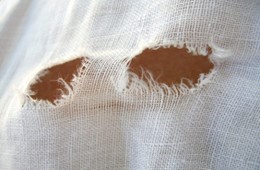A First Look at Microsoft Fabric: Recap
Did I disappoint you?
Or leave a bad taste in your mouth?
You act like you never had love
And you want me to go without
U2
In previous posts, I shared my initial impression of the recently announced Microsoft Fabric and its main engines. Now that we have the Fabric licensing and pricing, I’m ready to wrap up my review with a few parting notes. Here is how I plan to position Fabric to my clients:
Enterprise clients
These clients have complex data integration needs. More than likely, they are already on a Power BI Premium contract and highly-discounted pricing model that is reviewed and renewed annually with Microsoft. Given that Fabric can be enabled on premium capacities, you should definitely consider it selectively when it makes sense. For now, I believe a good case can be made for data lake and lakehouse if that’s your thing.
Now you have an alternative to Databricks and you can standardize BI on one platform and vendor.
I don’t have experience in Databricks to offer more in-depth comparison, but in my opinion the most compelling features to favor Fabric for now are:
- No additional cost or Power BI Premium capacity upgrade if you aren’t reaching the workload limits
- One platform and one vendor to avoid the blame game when things don’t work
- Fast Direct Lake data access for ad-hoc analysis directly on top of files in the lakehouse
- Easy data virtualization
If you decide in Fabric’s favor, you’d be wise to reduce dependencies on Microsoft proprietary and bundled features, such as Power Query dataflows and data pipelines insides Fabric (I’d use a stand-alone ADF instance once ADF supports Fabric). Hopefully, bring-your-own-lake will appear on day to circumvent the Fabric OneLake shortcomings.
Small and medium-size clients
Unfortunately, Microsoft didn’t make Fabric available with PPU (premium-per-user) licensing. This would surely put it out of reach for smaller organizations. True, you can purchase a Fabric F2 license for as little as $262/month and run it on a quarter of a core. I didn’t know a quarter of a core existed, but Microsoft did it, although you probably won’t get too far with it for production use (see results from my F2 limited performance tests here). You can opt for a higher SKU, but it would increase your bill and Fabric capacities can’t be auto-paused. For example, a “luxurious” 1 core (F8 plan) will put you in the 1K/month range, plus Power BI Pro licenses for all users (contributors and viewers).
But fear not. There is nothing in Fabric that you desperately need or can’t obtain outside Fabric in a much more cost-effective way.
Expect Microsoft to push Fabric aggressively. However, I believe Fabric has more appeal for large organizations while low-budged simple solutions with Power BI Pro or PPU licensing would likely better address your needs. And your BI solution is still going to be “modern”, whatever that means…





